Aquarium LED strips

LED strips in an aquarium are an important piece of equipment, without which the inhabitants of the glass container and plants will simply die. In addition, such lighting turns the aquarium into the main element of the interior, which stands out against the general background of the room. Do not forget that the illumination of the aquarium is an additional lighting of the room, the main thing is to choose the right place for the container with the fish.
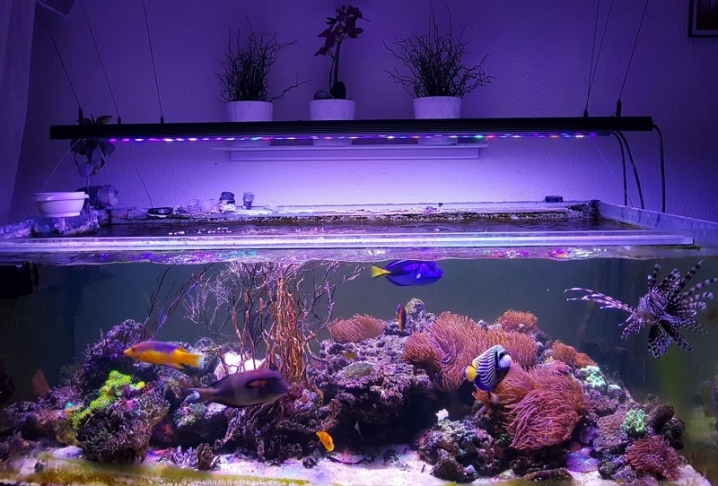
Advantages and disadvantages
There are a wide variety of aquarium lighting options available today. Each one differs in properties and characteristics. Professional aquarists prefer to install LED strips.
And this is not surprising, because such a backlight has a lot of positive qualities.
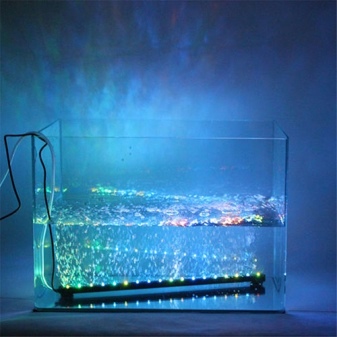
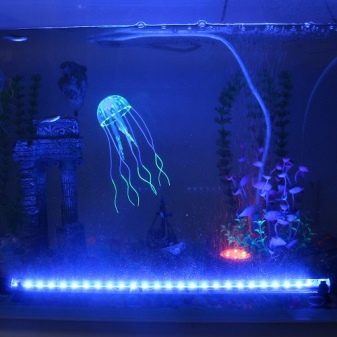
-
In the process of operation, no heat emanates from the LED strip, respectively, the water does not overheat, which has a positive effect on the life of the inhabitants of the aquarium and, of course, plants.
-
LEDs are able to keep the aquarium lit day and night. And thanks to modern technologies, LED strips are equipped with special sensors that independently regulate the lighting, turn on and off the backlight depending on the changing conditions in the room.
-
LED strips are distinguished by the parameter of moisture resistance and water resistance. Even if the LEDs are in contact with water, do not worry that the tape will fail. And, of course, it will not bring any harm to the inhabitants of the aquarium world.
-
Important advantages of LED strips are safety and efficiency. The maximum voltage that LEDs require is 12 volts. They are achieved by generating a power supply unit from a household power supply. That is why you can not worry that when a short circuit forms, the living creatures inside the aquarium will die.
-
The operating time of LED strips is much longer than that of conventional lamps. In simple terms, LEDs can last at least 100 thousand hours.
-
The color scheme of LED bulbs is so diverse that every aquarist will be able to bring all their design ideas into reality.
-
Installation of LED strips is so simple that even a child can cope with this task.
-
And most importantly, LEDs do not emit ultraviolet light.
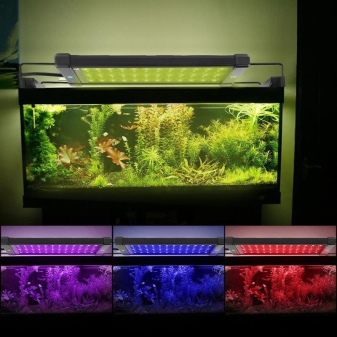
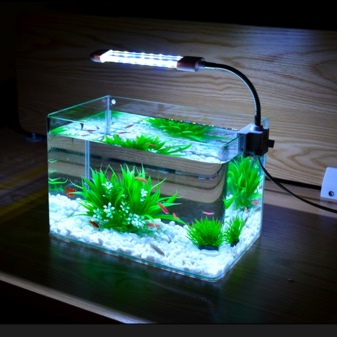
Despite such a wide range of positive qualities, LED strips still have some disadvantages.
-
The purchase of an LED strip can hit the pocket of the aquarist, especially if he equips a large container.
-
When choosing a tape, it is important to consider the lighting conditions and the shade of the tape. One tape may not be enough. Plants will grow from light, but their structure at the base will be sluggish, lifeless in appearance.
In any case, after installing a new backlight, the aquarist should monitor the state of life in the aquarium, especially the plants.
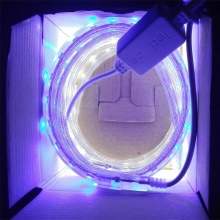
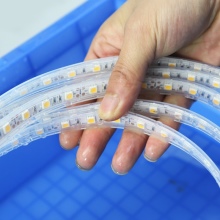
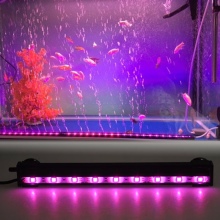
Views
Diode light sources are divided into several types, which every self-respecting aquarist should know about.
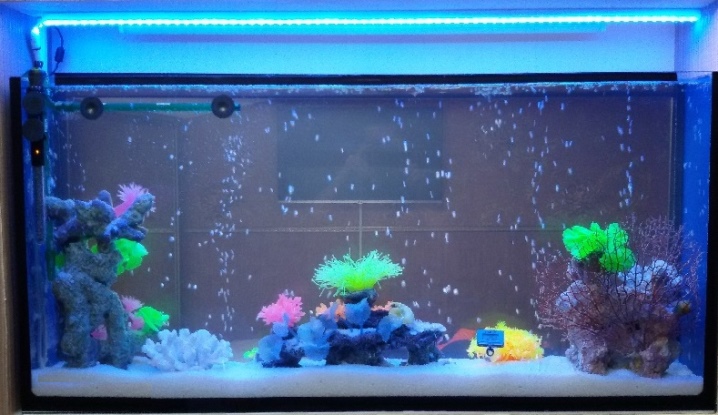
Diode lamps
Economical lighting that does not harm the aquarium habitat. Such illumination does not heat water, does not emit infrared rays. Diode lamps contribute to an even distribution of light inside the fish tank.

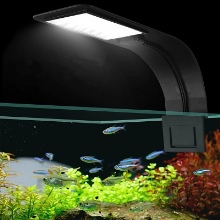
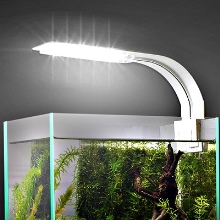
Diode tape
This lighting variation is additional, since its power has a lower indicator than diode lamps. Wherein LED strip light is waterproof, does not lose any characteristics when submerged under water.
Before purchasing and installing a lighting system in your aquarium, you must be extremely scrupulous about its choice.
Life in the aquarium depends on the right lighting.
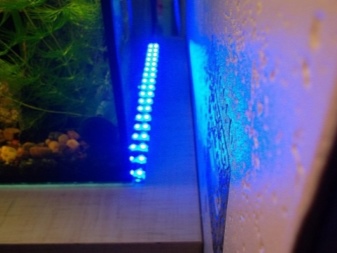
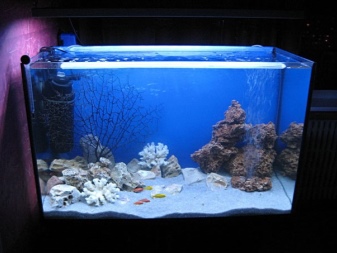
Selection Tips
In the event that only fish are the inhabitants of the aquarium, there is no difficulty in choosing the lighting. In this situation, a lamp that matches the characteristics of daylight is ideal.
If the aquarist wants to emphasize the color palette of the aquarium or focus on certain design details, you will have to remember the physics school curriculum on the topics: luminous flux in lumens, light temperature.
Approximately the same will have to be done if the aquarium is inhabited by whimsical species of fish or plants that require special lighting conditions.

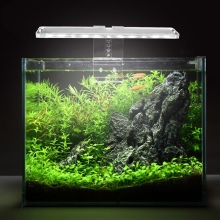
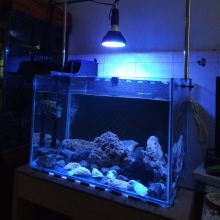
On the one hand, it seems that it is very difficult to choose an LED strip for an aquarium, but it is not. With even a minimum of knowledge, the aquarium fish lover will be able to find the best lighting system.
However, first of all, you need to stop your choice on waterproof tapes. They can be used as additional lighting not only under the lid, but also placed on the wall of the aquarium, where contact with water is inevitable.
Next, the color palette of LEDs is discussed. According to many aquarists, it is best to set your fish to white light. Others are sure that the color palette has the most positive effect on life under water.
In this case, it is worth finding out the needs of the inhabitants of the glass container, or experimenting with the color scheme through trial and error.

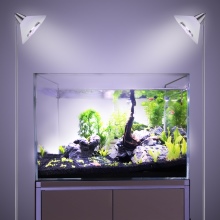
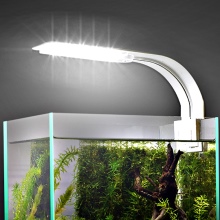
Payment
People who have little understanding of the intricacies of the selection of backlighting in an aquarium need to know that the installed lighting must have a luminosity corresponding to the volume of the container. According to the standard, 0.5 watt should be used per 1 liter of aquarium. If the aquarium is designed for 50 liters, then the LED strip must have a power parameter of 25 watts.
When making a calculation, it is important to take into account several nuances.
-
Population of the aquarium with plants, their lighting requirements.
-
Direction of lighting elements. In simple terms, each lighting system diffuses light in a different way. For example, LED shines at a 120 degree angle. Fluorescent bulbs shine in different directions, which is why not only the aquarium, but also the area close to it, gets under the illumination.
-
An equally important calculation parameter is the depth of the container and the thickness of the glass walls. The lighting system, fixed on the lid, reaches the bottom of the deep container only by 50-70%.
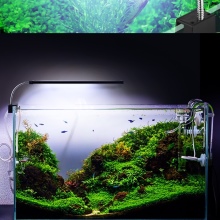
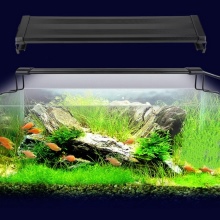
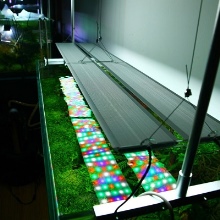
Installation instructions
You can make and install an LED strip in an aquarium with your own hands. This approach will allow the aquarist to save a lot on the purchase of a ready-made lighting fixture.
You only have to spend money on the tape itself, the connection cord and the insulating material.
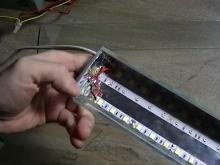
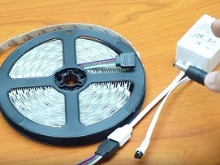

-
The LED strip is measured and cut.
-
Fixed on the aquarium lid. As a tape attachment, you can use a small profile, double-sided tape or sealant, but only aquarium.
-
It is necessary to connect the tape wires and the power cord.
-
The junction of the wires should be insulated with a sealant.
-
The initial start-up of the lighting is done without installing the cover on the aquarium.
-
Where the tape comes out from under the cover, an insulating gasket must be installed. At the end, you can walk on top with the same sealant.


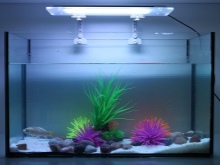
If the test run went smoothly, you can place the lid on the aquarium. Otherwise, the entire connection chain should be checked, and it is also necessary to check the connections if the LEDs are flashing.














The comment was sent successfully.